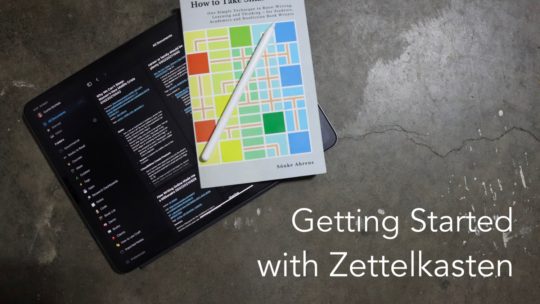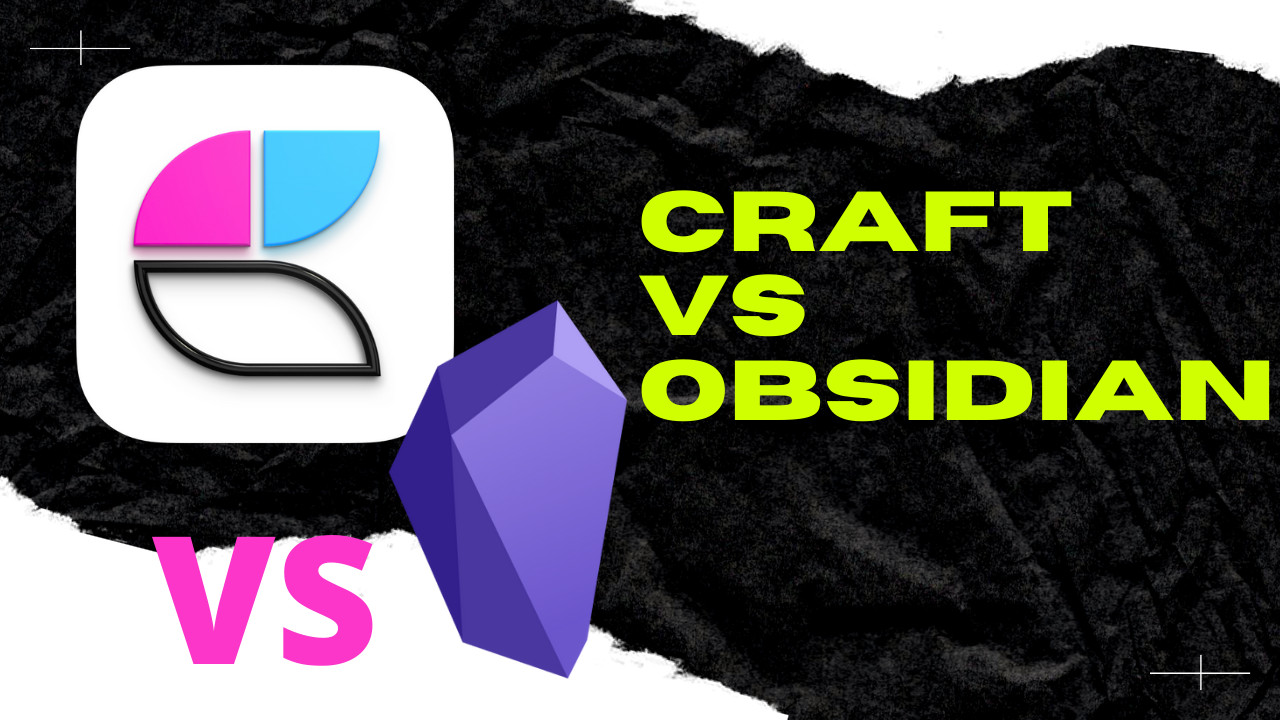I use two main tools for my note-taking systems. First, I use Obsidian for my own notes on books and research. Second, I use Craft for taking notes on home projects or bike parts, or other things that feel more visually oriented to me.
Today I’ll tell you what I like about both of them and why I think they’re both suited to different types of note-takers.
What Platforms Do You Use?
The first point to address is what platforms do you use to take notes and do you prefer native applications over web applications? From this angle, Craft is Apple only but has an excellent web app while Obsidian is on Windows, Mac, Linux, iOS, and Android with the same features across platforms.
On this item alone we could give Obsidian a leg up on Craft, but then not all Obsidian extensions work on their mobile platforms. On that front Craft is ahead because it has feature parity between desktop and mobile device usage1.
If you’re all on Apple devices then Craft is likely to feel more at home to you because it uses native conventions for its applications. If you have one outlier place where you don’t use an Apple device, then the web application is so good you may not even notice that you’re using a web app to access your notes.
If you operate across platforms, then Obsidian is its own thing and it works the same across all the areas you’re working. It won’t be like apps native to the platform you’re working on, but it will always be Obsidian.
The Visuals
Second, what type of applications appeals to you most? Craft certainly leads Obsidian in visual appeal for many users. It has beautiful cards and pages. It does a better job at embedding media than Obsidian does currently.
Coming from a coding background, Obsidian feels like a beautiful application to me. I don’t struggle with Markdown or the times that you see queries in your document to compile data. Obsidian is also making strong strides with its visual look with its recently introduced Live Preview. While not all plugins work with Live Preview, I continue to find more and more that work as expected.
For most regular users I think that Craft has a lead in the design department while any time a user sees Markdown it will make Obsidian feel more complex than it is.
Extensibility
No application can fulfill all the needs of everyone with its core functions, this is where an API and extensibility comes into play. This is also where Obsidian has a strong lead over Craft.
Early in the development of Obsidian, they decided to build many core features as plugins for the application. This meant that they needed to have a robust API to use so that the basic application could be developed. Later on, when extensions were added to Obsidian, there was already a strong API to work with that developers have built amazing things with.
Craft focused on the core application and only recently introduced extensions, which are only available on the desktop currently. This means that their API is younger and while we’re seeing decent extensions that leave me excited for the future of Craft, there is still a long road to walk to get some of the powerful extensions we see in Obsidian.
While I think extensibility is important, it’s also likely not as important as you think. Many of the Obsidian plugins I have installed remain unused on a regular basis. Yes, the Advanced Tables plugin is cool, but I rarely have tables in my notes so wheneve I use it I must look up the documentation again to figure out what I want to do.
It’s really easy to spend lots of time looking at plugins and fooling yourself into thinking that you’re making progress. You’re actually procrastinating and would have been better off choosing a tool that didn’t have any plugins so you could focus on getting your research done and your notes were taken.
Data Ownership and Portability
If there is one thing we’ve learned from legacy note applications like Evernote it’s that lockin is terrible. Even today exporting notes from Evernote is a terrible experience, so it’s important to understand how your notes are stored and what that means for your data.
While Craft is locked behind its own schema for storage, they do have a strong stance on data ownership and portability. It has 5 core principles.
- Your data is always available as they store all your data on device, and in the cloud. You can edit offline and your changes will by synced.
- Your data is always accessible because they built for all platforms and then added a web application for those times you’re on a non-supported platform
- They let you make your own data trade-offs by allowing external locations if you don’t mind the features you have to give up.
- You can move your own data. This is backed up by how easy it is to export without any type of lockin like we see in other legacy note applications
- They want your data accessible outside of Craft. This is why they’re developing their API and where they admit they have the most to deliver to live up to their goals.
This statement was made early in 2021 and since then Craft has continued to take steps to fulfill their ideal of data ownership. They have an API and their export tools are excellent. While there is some lock-in because external applications can’t edit your files in place for Craft to then read, you can easily move all your files out of Craft into other tools.
Obsidian is open by default. It stores your notes in plain Markdown files which can be found on your hard drive and edited with any other tool that edits Markdown files. In fact, you can even run a tool like logseq alongside your Obsidian notes and edit with both tools, or you can index your files with DEVONthink and then leverage the AI to find related articles.
While Craft is very open and doesn’t engage in any type of true lockin, Obsidian wins here because it merely reads your Markdown files in place. Delete Obsidian and you still have all your notes.
A Word on Speed
According to Alexander Rink, Obsidian is the fastest knowledge management tool he’s tested. While this could be important for people with vaults that have 10,000 notes, most people don’t have that volume. In most cases, the features an application has far more important than a metric like how fast it imports 10,000 files.
If you’re trying to choose a PKM tool, don’t simply look at RAW speed numbers. Ask yourself what features you need in a tool and start there.
Recommendation…it depends
While I’m sure you’d like a specific single tool to use those types of answers always miss so much. In truth, the ideal tool for you depends on who you are and what type of problem you’re trying to solve.
For all my reading and research I use Obsidian. For all my house projects that I collaborate with my wife on, we have a shared Craft workspace. For personal office research as I plan out what I want in my desk and office, I also use Craft. Splitting up different working modes means I don’t clutter my Obsidian database with information and means that I can more easily get into the mindset needed for each type of task.
If you’re more visually oriented and have no background in coding, then I think that Craft is going to appeal to you more than Obsidian will. Craft is easy to use and fast enough for 99% of everyone. It makes collaboration easy and is a pleasure to use across its supported devices.
If you want to dive deep into your note workflow2 then Obsidian has a deeper well to draw from. The strong API and wealth of extensions mean that Obsidian can be wrangled to your workflow, even when it’s probably not the right tool.
What is your preferred note tool?
- Yes this excludes the new extensions features which are coming to mobile…at some point. ↩
- Maybe you shouldn’t do that even because you want to produce stuff not just take notes…I hope. ↩

Getting Started with Zettelkasten
If you’ve been wondering about what Zettelkasten is and how to start organizing your notes with this excellent system then this course is for you. I’ll cover the basics of choosing which tool to use, how to take notes, how to deal with linking your notes, and much more. You can also become a member to get all my courses.
$99 USD (30-day guarantee)
